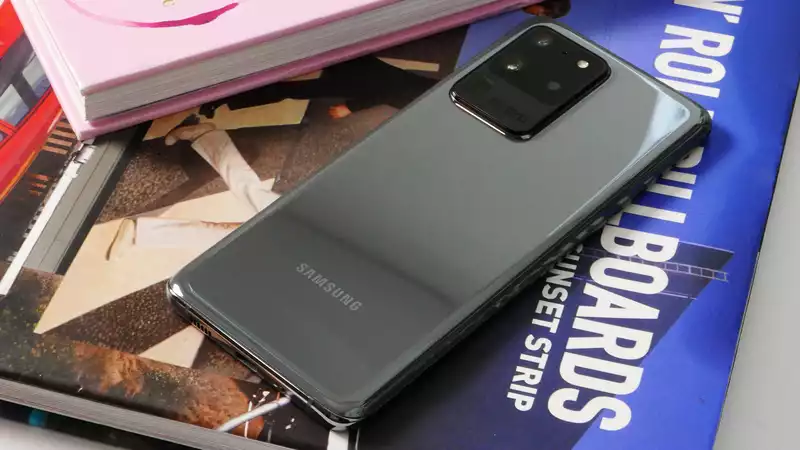Samsung has always taken smartphone photography seriously, and the Galaxy S20 series is no different. However, the Galaxy S20 Ultra takes things a step further with four cameras, including a 108-megapixel main camera and a 48-megapixel telephoto with 10x lossless zoom.
Ostensibly, the $1,399 S20 Ultra is the pinnacle of Samsung's mobile photography prowess and should make the iPhone 11 Pro and Pixel 4 take notice and set a new standard for best camera phones. Below are four ways the S20 Ultra will redefine flagship smartphone cameras in 2020.
It is rather common to see telephoto lenses with 2x or 3x optical zoom on many premium smartphones these days. And while the standard Galaxy S20 and Samsung Galaxy S20 Plus use 3x "optical" zoom with crop, the S20 Ultra's 48MP shooter is of a completely different sort.
First, it employs a prism system to achieve the space needed for such power. Furthermore, the combination of hardware and intelligent software allows for a 10x "lossless" hybrid zoom, which cuts out the blurring and noise that is common in pure digital zoom.
Surprisingly, however, the S20 Ultra can continue to zoom beyond 10x, with a 30x digital zoom option, which we found to be the sweet spot in terms of the trade-off between detail and power when we tried this phone in person. s20 Ultra's space zoom lens can zoom up to 100x, which is certainly impressive, but very difficult to get a steady shot of.
Still, just having the option to cut in so close is more than you can get with most phones, and would be a very useful asset for mobile photographers working from a distance.
The Isocell Bright HMX sensor in the Samsung Galaxy S20 Ultra is capable of capturing an amazing level of detail, far beyond anything observed in other smartphones to date. 108 megapixels at 1/1.33 inches, it is considerably larger than most mobile imaging sensors, allowing it to capture more light. In other words, it can capture more light.
With these megapixels at its disposal, the Isocell Bright HMX can combine them to make fewer (albeit larger) sensor pixels. However, while many phones are capable of quad-pixel binning, the S20 Ultra's sensor collects such a wealth of data that it actually has the ability to merge nine pixels into one, allowing for highly optimized imaging in even the most challenging low-light scenarios.
The result: when shooting with the Galaxy S20 Ultra, one can expect amazing detail in bright locations and excellent visibility in dark locations.
As phone manufacturers add more and more camera lenses to their smartphones, users can capture perspectives that were previously impossible, from expansive landscapes to detailed macro shots. On the flip side, excessive optics have made the use of smartphone cameras very complex, and software has not always risen to the challenge. It is not uncommon to have to switch between several different shooting modes to get to the desired mode, which can be incredibly frustrating when you are pressed for time or have extremely little time to capture a moment.
Enter Single Take, a new mode Samsung introduced with the S20 series. (It's also available on the foldable Samsung Galaxy Z Flip, which is now shipping.) Single Take uses the phone's myriad sensors to capture a variety of content, and then lets you choose what you want to save.
With a single press of the shutter, several different images are displayed, including a standard wide photo, another super-wide photo, a partially colored photo, perhaps with a blurred background, along with a short motion GIF or slow motion video. Choose the ones you want to save and discard the rest.
Instead of taking the same photo over and over again or recording the same video over and over again, immortalizing the moment in multiple ways, Single Take is instantaneous and relieves you of the boredom you expect from modern smartphone cameras.
Many smartphones these days can record 4K video, and the most capable can even shoot 4K at 60 frames per second. But for many device makers, 8K is still a pipe dream. This is because it requires huge image sensors with astronomical megapixel counts and, of course, processing power. [Thankfully, with the aforementioned 108-megapixel Isocell Bright HMX sensor and Snapdragon 865 chipset, the S20 Ultra has all the gear needed to produce videos with detail never before seen on a smartphone. This is a big deal because 8K TVs and monitors are still a rarity, and 4K has only recently become the new standard in the marketplace. Still, the S20 Ultra's image processing stack is so advanced compared to the competition that it should be fine for years to come.
.









Comments